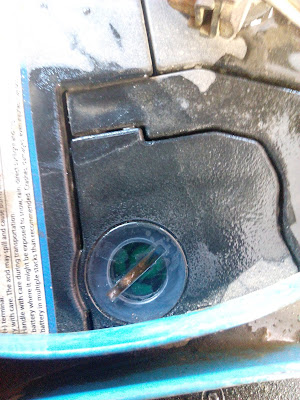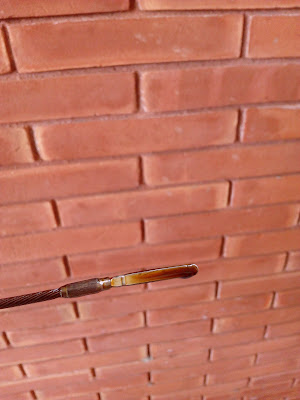It is important to keep your car in top shape in order to make it a reliable transport. Cars require maintenance from time to time for its proper and smooth working. Maintenance can be categorized in to two categories based on the interval of maintenance namely short-term and long-term maintenance. This article will provide with information regarding some common short-term and long-term car maintenance. Before beginning to list them, I would like to stress on a very crucial point.
Always Read Your Owner's Manual:
Always read your owner's manual, this cannot be stressed enough. The reason is that every model and make has its own maintenance requirements which are described and tested after years of research and feedback. Hence, every car has different maintenance needs. For this reason, owner's manual bear a great importance. It contains the recommended interval of maintenance in it. So always read it for complete information. Besides, you might get to know some of the uncommon features your car has.
Now a list of short-term and long-term maintenance is given in the subsequent sections.
Short-term Maintenance of Cars
This type of maintenance is usually required on daily to monthly basis. They are generally cheaper than many of the long-term ones. Most of these require very little time and are often a checklist.
1. Check Battery Water Level
Car batteries are of two types, i.e. lead-acid batteries and sealed batteries. if you are using sealed batteries, then no maintenance is required. Just check the color indicator of battery health located on top of battery. However, lead-acid batteries require periodic checking based on its condition and usage. Check the battery's water level, if it is below the marked level then add water individually in all the cells up to the mark.
2. Check Engine Oil
It is very important that the engine oil is checked and changed after the recommended intervals. Engine oil helps to reduce the friction between the moving parts of the engine by providing lubrication. The recommended interval for oil change ranges between 3000 - 5000 miles but it can vary depending on the condition of the engine and the total distance driven. If the engine oil is leaking or dropping in level then it is an urgent matter that required investigation into the cause.
3. Radiator Coolant
Always make sure that there is enough engine coolant in coolant reservoir/bottle. When the engine is cold, remove the radiator cap check the coolant level there too. Do Not Check On A Hot Engine. Sometimes due to some problem the engine might stop drawing coolant from the reservoir and while there is still full reservoir of coolant, the radiator might be empty. Also check the floor of garage for any signs of leakage. Do not use water instead of coolant. It can cause rust in the radiator.
4. Brake Fluid
Check the level of brake fluid in the reservoir. If it is slightly low then fill it up to the mark. An empty reservoir indicates a leakage and a professional help should be sought to rectify it. Check the owner's manual for more details.
5. Changing Filters
It is a good practice to change oil filter on every oil change. Similarly, check the air filter at least once a month for its condition. A dirty air filter can affect the air intake of engine and thus affecting engine performance and fuel economy.
6. Checking Tires
Needless to say, check your tires daily in the morning before taking out your car. Check for signs of punctures such as reduce air pressure. Have your tires' air pressure checked at least once a week.
Now that some of the short-term maintenance has been listed, it is time for the long-term maintenance list. In contrast to the short-term maintenance, long-term maintenance requires more time and money. It also requires the expertise of a trained mechanic for it to be completed successfully. Always consult at different workshops before going into any big repairs because if they are done poorly, it can result in other problems. Some of the long interval maintenance is listed below.
Long-term Maintenance
1. Replace Spark Plugs
Replacing spark plugs is one of the main requirements for good fuel economy. If the spark plugs are worn out, it can result in misfiring of engine which results in noises from engine and also reduces fuel economy greatly. Typically spark plugs are replaced after every 30,000 to 50,000 miles but this can vary depending on the condition of car, its model and make. Owner's manual is thing to be consulted for exact information.
2. Engine Tuning
Engine tuning is required after every 50,000 to 70,000 miles. It involves a variety of smaller cleaning tasks such as servicing throttle body, ignition wires and distributor system, cleaning/replacing spark plugs etc. Certain items may need to be replaced depending on their condition. New cars usually don't require an engine tuning as often as old cars does.
3. Replacing Old Tires
Tires wear out and need replacing after every 20,000 to 30,000 miles. But this is the most time variable maintenance of a car as the wear and tear of tires depends on a lot of factors such the brand, your driving habits, terrain on which you often drive such as snow or paved roads. Always check the spare tire before going on a long journey. Your tires may even need replacing even if they are not driven much but are older than 5 years.
4. Changing Brake Pads And Brake Shoes
Brake pads and brake shoes are two different components of the braking system and are often confused with each other. Brake pads experience more wear than brake shoes. Check the owner's manual for recommended replacement guidelines.
That's it for this article. It has listed some of the major and minor maintenance needs of a typical car. However, exact information can be found in the owner's manual.



Comments
Post a Comment